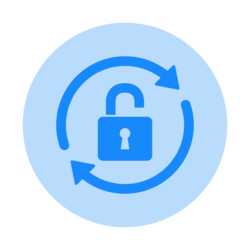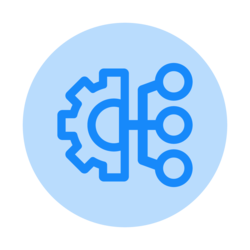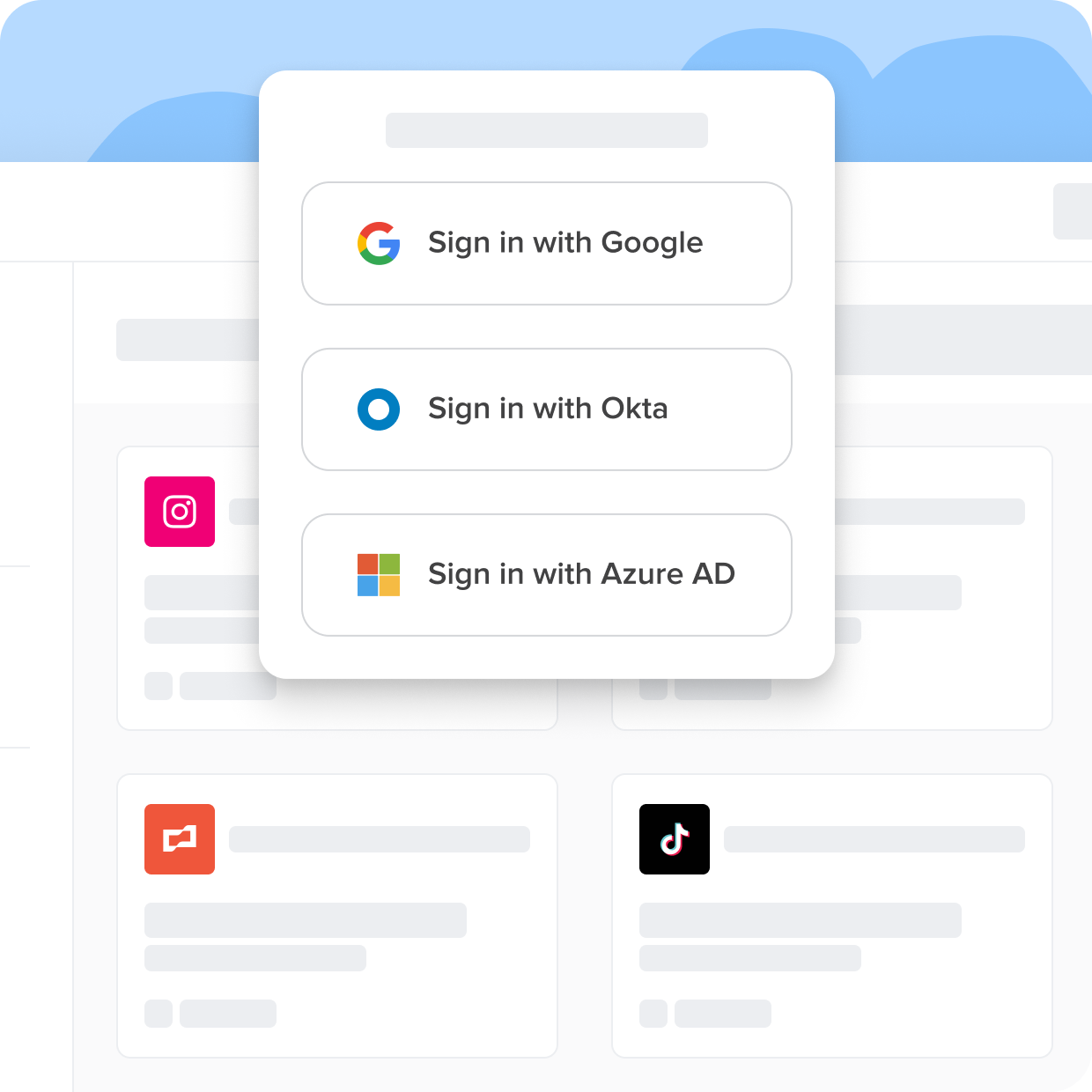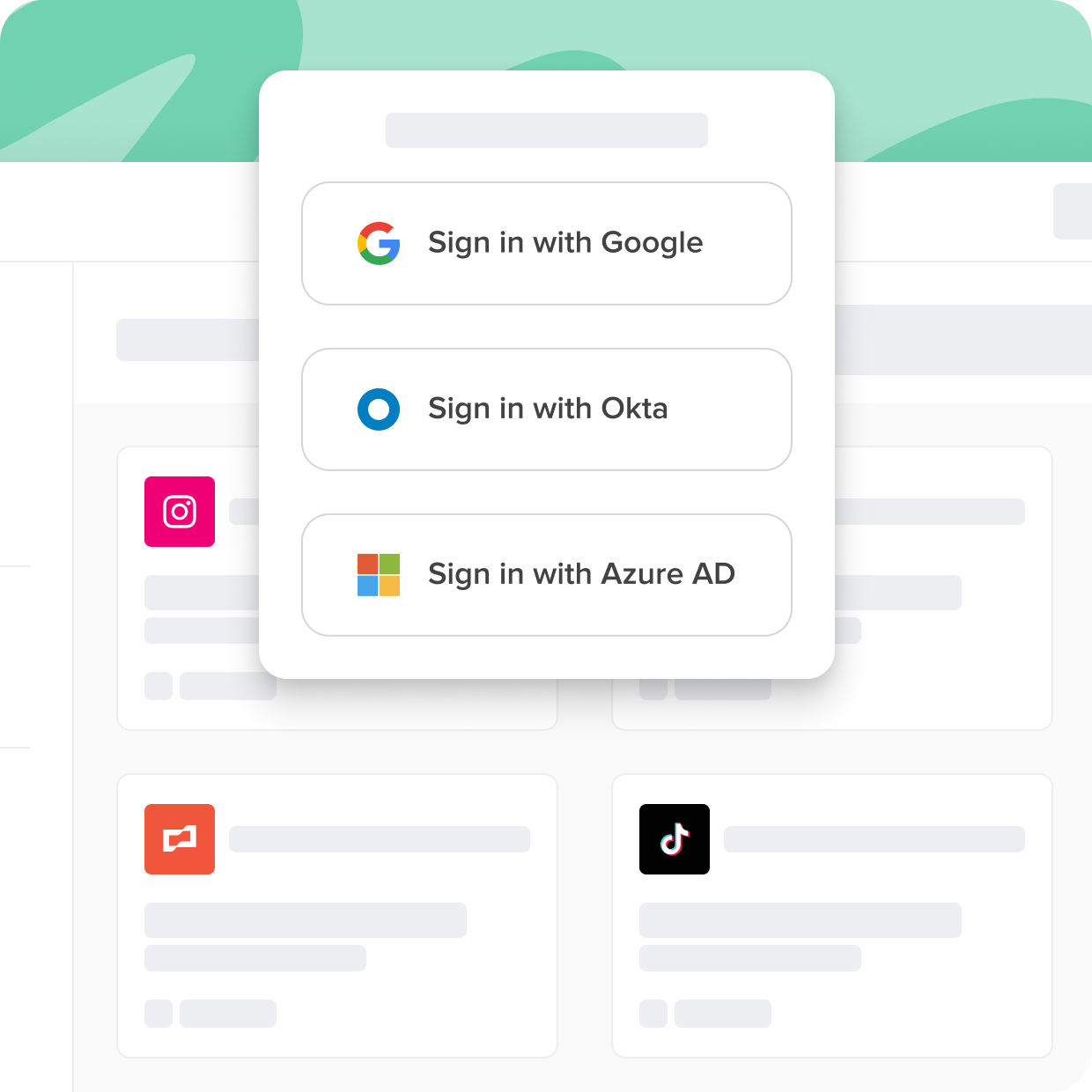Identity and access management (IAM) ensure digital infrastructure security and compliance. In today's increasingly connected world, organizations are tasked with managing and controlling the access of numerous users within their systems—this is where identity and access management solutions come into play. By implementing a robust IAM framework, businesses can maintain the integrity of their systems and protect sensitive data.
Unfortunately, many corporate applications don't support the SSO standard and can't reap all the benefits. The applications that fall into this category are best called "nonfederated." Nonfederated applications are a new category that is becoming increasingly challenging for businesses to manage and secure effectively, yet increasingly critical for businesses to succeed.
Cerby connects all your apps to your SSO tools, even if they don't support the SSO standard. In this guide, you'll learn about different SSO tools, the challenges, and the players.
Streamline Access With Single Sign-On
Not all apps are created equal. Some come with security gaps and complexities that can hinder user adoption and put sensitive data at risk. With Cerby, you can ensure secure and seamless access to all your applications, regardless of their support for standards like SSO.
With Cerby You Can

Close the identity gap

Universally enforce 2FA

Eliminate the SSO tax
What Is Identity And Access Management
Identity and access management has become increasingly relevant in today’s online landscape. With more and more businesses seeking to protect their digital assets, the ability to secure data is more important than ever. But what is identity and access management, or what is IAM? Identity and access management (IAM) is a framework of processes, policies, and technologies that organizations utilize to manage and control digital identities, as well as regulate access to their digital resources.
IAM security encompasses a variety of tools and practices aimed at protecting digital identities and controlling access to sensitive information. It ensures that only authorized individuals can access specific resources and perform certain tasks within an organization's digital environment.
A comprehensive IAM solution offers the following benefits:
- Enhanced security: By employing multi-factor authentication, risk-based access controls, and advanced security features, IAM security helps protect sensitive information from unauthorized access.
- Regulatory compliance: A well-designed IAM system can help organizations meet regulatory standards by enabling granular control over access to sensitive data and maintaining detailed audit trails.
- Improved operational efficiency: IAM streamlines the process of provisioning and de-provisioning user accounts and managing access rights.
- Reduced administrative overhead: Automating access control processes can help free up time and resources for more strategic initiatives.
- User experience: By providing single sign-on (SSO) capabilities and self-service options for managing personal information and access rights, IAM can improve user satisfaction.
Identity Management
Identity management is one of the three key components of identity and access management (IAM) systems, which also include access management and privileged access management (PAM). IAM architecture is designed to create and manage digital identities for users. Access management controls access to sensitive information to ensure that only authorized personnel can view it. In comparison, PAM not only tightly controls access to an organization's most sensitive systems and applications but also provides automatic session recording and auditing, and reporting capabilities. While PAM is a distinct subset of IAM, both are crucial in establishing a robust security posture with respect to an organization's mission-critical systems and data. IAM systems play a pivotal role in today’s digital climate, as they allow organizations to securely manage digital identities and control access to their resources.
The identity management piece revolves around creating, maintaining, and securing digital identities. This process encompasses various aspects, including authentication, which verifies the identity of a user or device attempting to access a system or resource. It also covers authorization—the process of assigning access rights and permissions to digital identities. The de-provisioning of digital identities and their associated access rights when no longer needed is another critical element of identity management.
Access management is concerned with controlling and regulating access to resources. One of its most important benefits is SSO. This allows users to access multiple systems or applications with a single set of credentials. Access management also includes multi-factor authentication (MFA), which adds an additional layer of security by requiring users to provide two or more forms of identification to authenticate their identity.
PAM deals with the management and control of privileged access or elevated permissions granted to specific users or systems. PAM involves privileged account discovery, identifying and cataloging privileged accounts and credentials within an organization. Session monitoring is another crucial aspect of PAM. It records and monitors privileged user sessions to detect suspicious activity and enforce the principle of least privilege.
In short, when considering PAM vs IAM, it’s important to remember that IAM focuses on managing and controlling access for all digital identities. PAM, on the other hand, specifically targets privileged access, which poses a higher risk to an organization's security due to the higher-level permissions associated with these accounts.
Identity And Access Management Solutions
Identity and access management solutions are essential for organizations to protect access to their resources. Several popular IAM solutions and providers have emerged on the market today, offering various features and capabilities to meet the diverse needs of businesses. Some of the most popular providers include SailPoint, AWS IAM, Azure IAM, and Google IAM.
- SailPoint: This leading provider of enterprise-level IAM solutions offers a comprehensive suite of tools for managing and securing digital identities across various applications and systems. SailPoint's IdentityIQ product includes a plethora of identity management features, including automated provisioning, password management, and access certification.
- Azure IAM: Also known as, Azure Active Directory (Azure AD), is Microsoft's cloud-based IAM service that provides a robust set of identity management features. Azure AD’s capabilities include user provisioning, SSO, MFA, and role-based access control. It also integrates seamlessly with other Microsoft products, such as Office 365.
- AWS IAM: AWS IAM is designed for organizations using the AWS platform. This solution brings a wide range of identity management features to the table, such as user provisioning and role-based access management. The service enables organizations to create and manage AWS users and groups, as well as define and enforce access policies for AWS resources.
- GCP IAM: Google Cloud Identity and Access Management, or GCP IAM, is a core component of the Google Cloud Platform that allows organizations to manage access to resources and services within the GCP environment. GCP IAM provides a flexible and granular approach to access management, enabling administrators to define roles and permissions at various levels. It also supports context-aware access controls, which allow users to enforce access policies based on factors such as user location or device security status.
Identity And Access Management Tools
There are various types of identity and access management tools available in the market that help organizations control and secure their digital assets. Identity management tools enable organizations to manage user access rights and permissions, while access management tools focus on controlling user access to specific resources. Additionally, IAM security tools are designed to protect identities and access by detecting fraudulent activity, managing credentials, and monitoring user behavior. There are both open-source and proprietary solutions available for IAM, depending on the organization's needs and requirements. Open-source solutions such as Keycloak, OpenIAM, and WSO2 provide cost-effective options for IAM implementation, while proprietary solutions such as Okta, OneLogin, and Microsoft Identity Manager offer robust and customizable features. Employing IAM tools and technologies can help organizations improve their security and compliance posture by enabling them to control and monitor user access to sensitive resources.
However, identity management alone is not enough to secure an organization's entire technology stack. Organizations are struggling to mitigate cybersecurity risks associated with shared accounts. Half of the respondents from the Ponemon Institute’s study indicated that their organization’s access management strategy allows employees to share login credentials in a secure manner, as required by the application. However, 27% of respondents considered their organization to be highly effective in reducing cybersecurity risks that arise from shared accounts. Among the 73% of respondents who rate their organization's effectiveness as low, 56% express a desire to improve their ability to mitigate cybersecurity risks.
Identity And Access Management In Cloud Computing
Access control in cloud computing is a critical concern for businesses as they seek to maintain control over who can access their data and resources in the cloud. IAM solutions help them manage access control in the cloud by leveraging a suite of advanced features. Identity and access management in cloud security is essential for ensuring that only authorized users can access an organization’s cloud resources.
IAM security challenges in cloud computing arise from the complexity and dynamic nature of cloud environments. IAM solutions help to address issues by providing comprehensive tools for managing digital identities and access control in the cloud. For example, IAM security AWS tools empower users to define and enforce access policies for AWS resources. By prioritizing identity and access management in cloud computing, businesses can better achieve their most pressing objectives while maintaining a high level of security.
Identity And Access Management Jobs
Identity and access management jobs encompass a variety of roles, each with specific responsibilities, salary expectations, and relevant certifications. As the demand for IAM expertise grows, organizations seek skilled professionals to secure their digital environments and manage access to resources.
One of the most vital roles in this space is that of the identity and access management analyst. This person is responsible for implementing and maintaining IAM systems, making sure that access policies are enforced, and managing digital identities. These professionals are expected to have a strong understanding of IAM concepts and technologies. The cyber security IAM salary for analysts varies depending on experience and location but typically ranges from around $60,000-$90,000 per year.
Other IAM security jobs include IAM architect (one who designs and implements IAM solutions and strategies) and IAM administrator (a professional that manages IAM systems and user accounts). Salaries for these roles differ drastically depending on experience and qualifications. Potential candidates should research salaries for their specific geographic location and level of expertise for a better idea of what they can expect to be paid.
Job seekers might also consider pursuing identity and access management certification to further demonstrate their expertise in this field, as well as their commitment to continuous learning and professional development.

